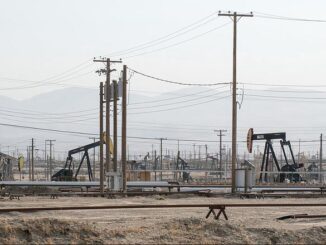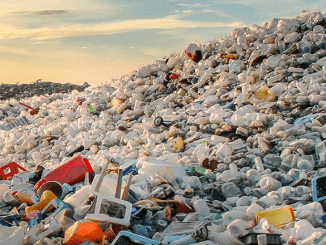When you settle in for a marathon of your favorite series, how often do you consider the environmental cost? With billions of hours of movies, shows, and music streamed each month, digital media has become an invisible contributor to the climate crisis. This article explores the hidden carbon footprint of streaming and investigates how media delivery can become more sustainable—with a closer look at what innovators are doing to lead the change.
The Hidden Environmental Cost of Streaming
Behind the effortless click-to-play experience lies a vast technological infrastructure. Every second of streaming relies on a global network of data centers, powerful servers, and long-distance cables that move data from storage to screen in real time. These operations demand enormous amounts of electricity, much of which is still generated from coal, gas, or oil.
Data centers—the backbone of digital media—must run around the clock to guarantee instant access. Server farms are filled with thousands of machines kept cool with air conditioning and fans, multiplying overall power needs. While some providers have shifted to renewable energy, estimates suggest the majority of streaming’s energy use still produces greenhouse gas emissions.

How Streaming Leads to CO₂ Emissions
How significant is the environmental impact of watching your favorite movie online? According to a 2021 study published in the journal “Resources, Conservation & Recycling,” streaming a single hour of standard-definition video can emit up to 56 grams of CO₂. That is roughly the same as driving a typical gasoline car 222 meters.
Think of it this way: streaming both seasons of a popular show like “Squid Game”—about 18 hours in total—can generate as much CO₂ as driving for 4 kilometers. Now multiply that by millions of viewers. When over 150 million people worldwide streamed “Squid Game,” the resulting emissions were comparable to the total exhaust from all passenger vehicles in a major city like Berlin for nearly three weeks.
Why does streaming require so much energy? Delivering high-quality video means storing multiple versions of each file, transferring huge amounts of data, and running servers continuously. The more pixels, resolution, and simultaneous users, the greater the demand on networks and hardware.
The proliferation of game shows has the same effect. Today, this area of entertainment is developing rapidly, attracting more and more users. This leads to an increase in server load and, consequently, an increase in carbon footprint. It is known that one of the most popular games in the show format today is Funky Time. Every day, tens of millions of people play it, which contributes to the load on servers and the release of harmful substances into the environment. The game is available on popular platforms, a full list of which is published on the Funky Time Game website.
Remote Work and the Rise of Daytime Streaming
The past few years have brought a dramatic shift in how and when people stream content. With remote and hybrid work now widespread, more individuals turn to streaming during their workday—not just after hours. A 2023 survey of 1,000 remote employees found that an overwhelming 95% watched online content while working, and half admitted to viewing movies or shows during office hours.
This daytime digital traffic adds to the load on data centers and networks, increasing streaming’s overall carbon footprint. As homes become the new workplaces, energy demands for streaming and video conferencing converge, quietly expanding the environmental impact of the modern work culture.
Why Sustainability in Streaming Now Matters More Than Ever
The climate impact of digital technologies is no longer a niche concern. Growing public scrutiny, along with stricter environmental regulations and corporate climate pledges, is pressuring the media industry to address its carbon emissions. For streaming platforms, sustainability is emerging as a key differentiator.
Consumers are beginning to factor environmental responsibility into their purchasing choices, while investors and regulators look for evidence of emissions reduction. Initiatives like the Science Based Targets network and new European Union disclosure requirements mean that sustainability is no longer optional for tech and media companies. Other industry players—including Netflix, YouTube, and Spotify—have announced investments in renewable energy or energy-efficient delivery, signaling an industry-wide trend toward lower-carbon media.
The Path Forward: Industry Collaboration and Smarter Streaming Choices
A sustainable streaming future depends on cooperation among technology companies, policymakers, and consumers. The platforms encourages competitors and partners to adopt greener practices and openly share the most effective solutions. Regulatory action, such as energy efficiency standards and emissions reporting, will also play a role.
For individual viewers, simple steps can help cut the carbon impact of streaming:
- Lower video resolution where possible, especially on mobile devices.
- Download content for offline viewing to avoid repeat transmissions.
- Choose platforms with demonstrated environmental commitments.
Researchers are developing next-generation data compression, greener server hardware, and AI-powered network management to optimize efficiency. Anticipated policy changes in Europe, North America, and Asia could soon require streaming services to publicly disclose—and reduce—their emissions.
Invitation to Action and Ongoing Dialogue
Reducing the carbon footprint of streaming will require sustained effort from the digital media sector, government, and consumers alike. Media companies must continue to innovate, regulators must incentivize responsible practices, and viewers should stay informed about the impact of their choices. Together, these actions can help ensure that the future of entertainment does not come at the expense of the planet. The conversation—and the work toward greener streaming—must continue, shaping an evolving digital world where both content and climate matter.



